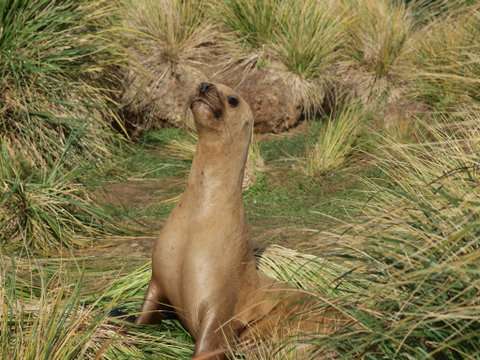Explaining sea lion decline

The southern sea lion population of the Falkland Islands witnessed a dramatic decline during the last century with numbers falling by 65 per cent between the 1930s and 1960s. It was thought commercial hunting was the main cause for this but now researchers working at British Antarctic Survey (BAS) and other institutions have identified another factor.
Writing in September's issue of Ecology the team estimate a change in the animals' habitats may have been to blame with warmer waters around their breeding beaches leading to changes in the availability of their prey. By analysing 160 years of winter sea surface temperatures the researchers identified a period of warming between 1930 and 1950 which coincided with the decline in southern sea lion numbers.
Their 2014 census of the population shows it has remained small and is still less than 6 per cent of the 375,000 estimated seals in the 1930s. That is despite the ending of commercial sealing in 1966.
One of the co-authors on the paper, Dr Iain Staniland, from BAS, says: "This study represents an important insight into why the current population has failed to recover despite a ban on commercial hunting for the last 50 years. While hunting is a very obvious reason for the decline in numbers, new evidence shows that changes in the Sea Lions' habitats, with warming waters around the Falkland Islands, are a more likely explanation."
Researchers at BAS, in collaboration with Deakin University at Warrnambool in Australia and other partners, undertook an extensive study which involved carrying out an island wide census to estimate the current population. Sea lions were tracked using transmitter devices and historical records analysed to determine why the population had failed to recover.
Dr. Alastair Baylis, from Deakin University, is the lead investigator:
"What really sets our study apart is that we collated historical records from national archives to estimate both the number of sea lions killed during commercial sealing operations and the population size in the Falklands and Argentina in the 1930s. Using the best data available, we challenged several notions previously considered to be fact, and came up with some very different conclusions. Environmental change is the most plausible of the hypotheses tested and may provide a more logical explanation as to why the population declined and failed to recover."
Journal information: Ecology
Provided by British Antarctic Survey
















